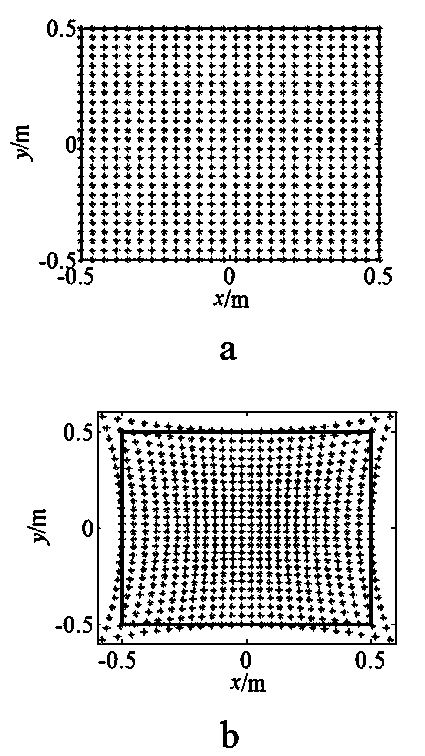Fast iterative shrinkage beam-forming sound source identification method
A technology of iterative contraction and sound source identification, applied in radio wave measurement systems, instruments, complex mathematical operations, etc., can solve the problems of limited practical application, slow convergence speed, long calculation time, etc., and achieve better comprehensive performance of sound source identification , fast convergence, and reduced computation
- Summary
- Abstract
- Description
- Claims
- Application Information
AI Technical Summary
Problems solved by technology
Method used
Image
Examples
Embodiment Construction
[0037] Below in conjunction with accompanying drawing and embodiment the present invention will be further described:
[0038] The present invention comprises the following steps:
[0039] Step 1. Construct difference function
[0040] figure 1 It is a schematic diagram of beamforming sound source identification layout, where r is the focusing coordinate vector, and r m (m=1,2,3,...,M) is the coordinate vector of the mth microphone, M is the number of microphones, N r and N c Respectively, the number of rows and columns of grid points, N rm and N cm are the number of rows and columns where the central grid point is located, respectively.
[0041] The cross-spectrum imaging function is a common algorithm for beamforming. It assumes a monopole sound source distribution model at the focus grid point position, and minimizes the difference between the acoustic signal cross-spectrum generated by the model point sound source and the actual measured acoustic signal cross-spectru...
PUM
 Login to View More
Login to View More Abstract
Description
Claims
Application Information
 Login to View More
Login to View More - R&D
- Intellectual Property
- Life Sciences
- Materials
- Tech Scout
- Unparalleled Data Quality
- Higher Quality Content
- 60% Fewer Hallucinations
Browse by: Latest US Patents, China's latest patents, Technical Efficacy Thesaurus, Application Domain, Technology Topic, Popular Technical Reports.
© 2025 PatSnap. All rights reserved.Legal|Privacy policy|Modern Slavery Act Transparency Statement|Sitemap|About US| Contact US: help@patsnap.com



